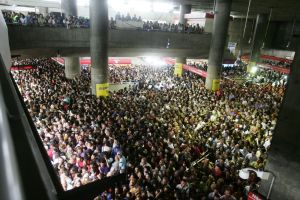The distribution of people of different income levels within urban areas is anything but random. Residential segregation is a palpable, undeniable reality to any observer of cities. The patterns of segregation are also extremely persistent over time: despite massive demographic changes and migration flows, the spatial arrangement of income groups within cities changes only very slowly. Why is this the case? Surprisingly, there are not many theoretical insights on the long-run drivers of residential segregation, and thus very little guidance about what policies should or should not do about it.
A recent excellent contribution by Rémi Louf takes a step forward in proposing much needed mechanistic insights on the patterns of urban segregation. In his work, he departs from the null case – an unsegregated city – against which observed segregation levels can be compared. He then proposes a measure of segregation inspired on Marcon and Puech’s M-function of co-location, and a way to let a class structure emerge from the data (in this way avoiding the need to impose arbitrary income cut-offs).
Among other things, he finds that “neighbourhoods are geographically more coherent as cities get larger, which corresponds in effect to an increased level of segregation as the size of the city increases.” Interestingly, this phenomenon seems to be more important for higher-income households than for other income groups.
In the preliminary findings from my study on income segregation in Brazil, I find strong support for these patterns. The level of segregation increases with income, so that individuals in the highest income category are far more segregated than any other income group, including the poorest. There also seems to be a strong, positive relationship between city size and income segregation levels. An interesting way forward is to think about the relationship between density and the over-representation of the highest and lowest income categories in urban areas in developing countries. Ultimately, we need to understand how income segregation evolves with economic development.


